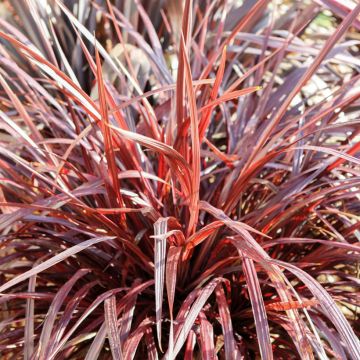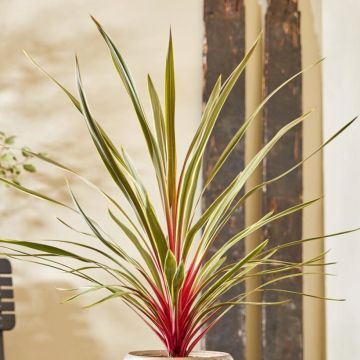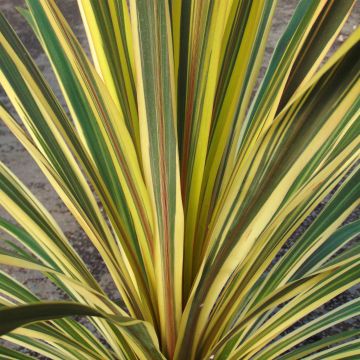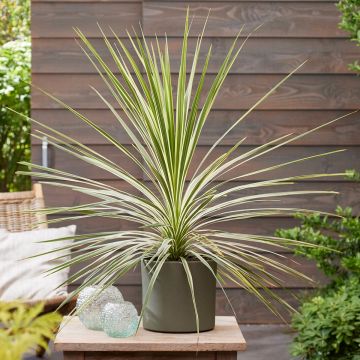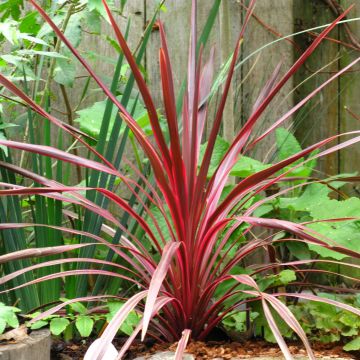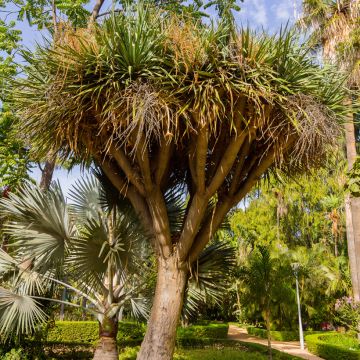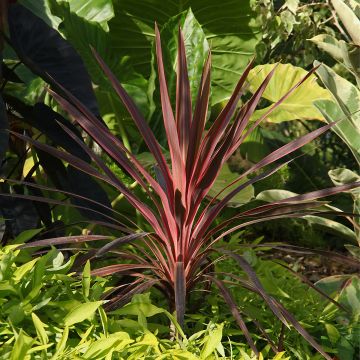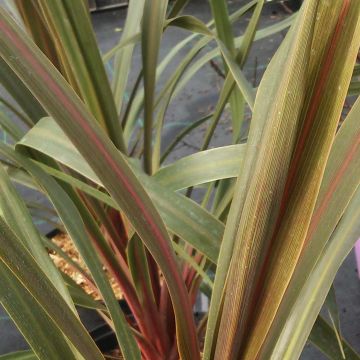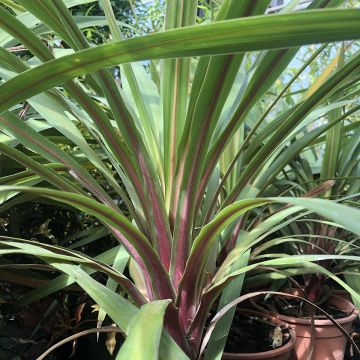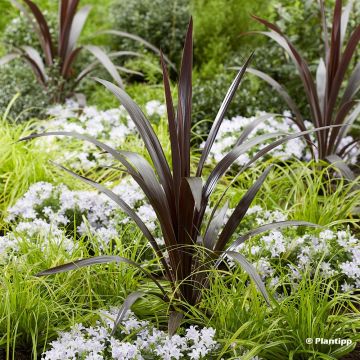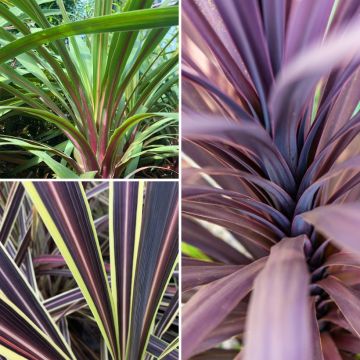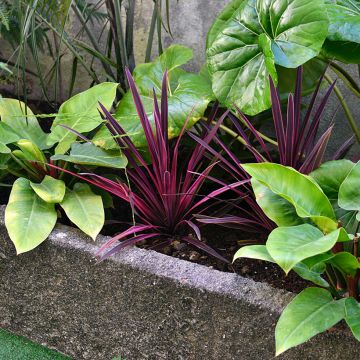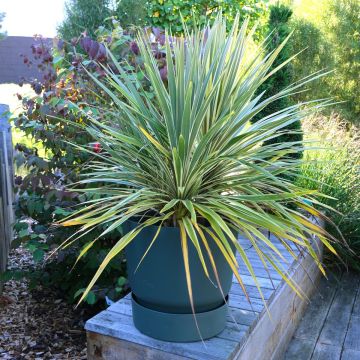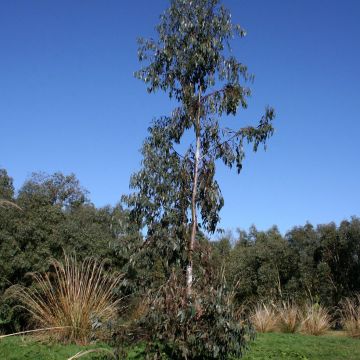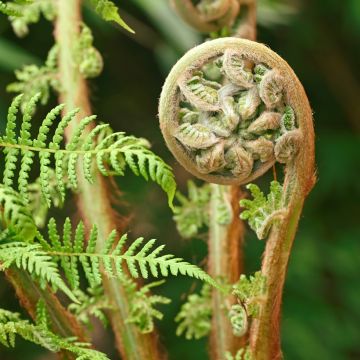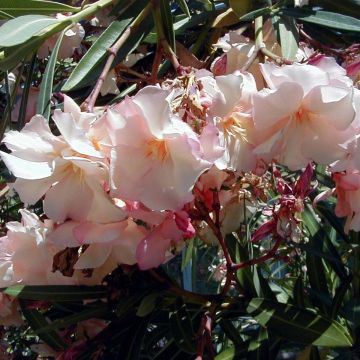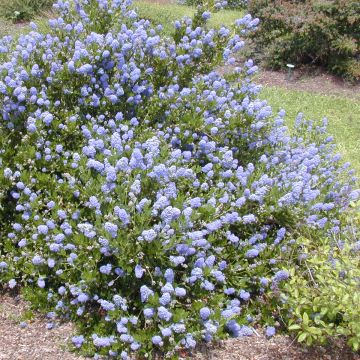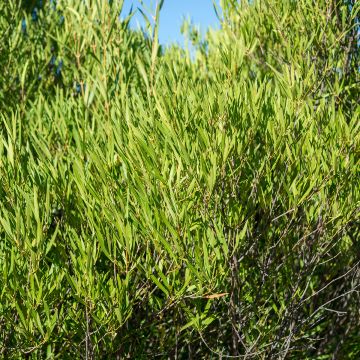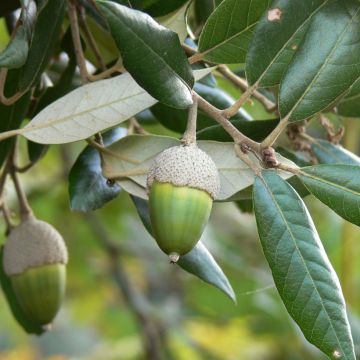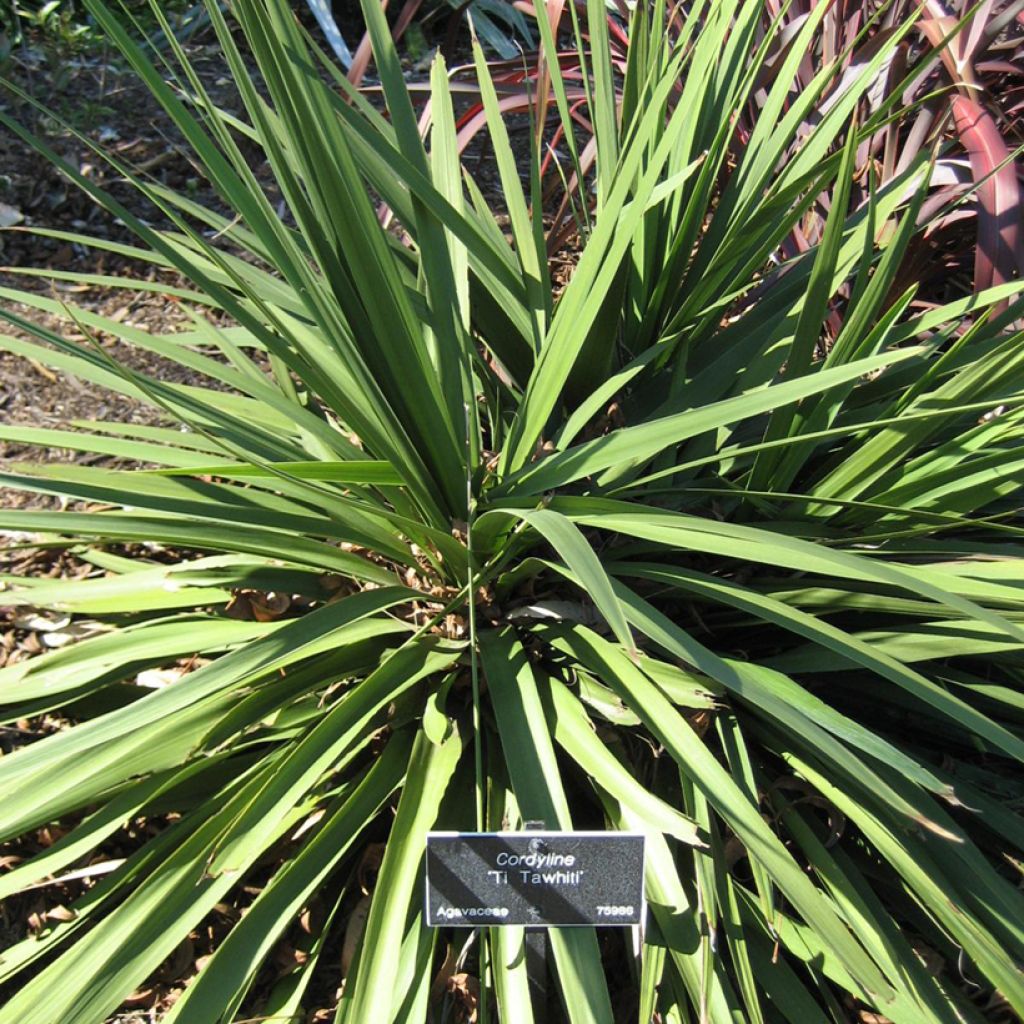

Cordyline Ti-Tawhiti
Cordyline australis Ti Tawhiti - Cabbage Tree
Cordyline australis Ti Tawhiti
Cabbage Tree, New Zealand Cabbage palm
Special offer!
Receive a €20 voucher for any order over €90 (excluding delivery costs, credit notes, and plastic-free options)!
1- Add your favorite plants to your cart.
2- Once you have reached €90, confirm your order (you can even choose the delivery date!).
3- As soon as your order is shipped, you will receive an email containing your voucher code, valid for 3 months (90 days).
Your voucher is unique and can only be used once, for any order with a minimum value of €20, excluding delivery costs.
Can be combined with other current offers, non-divisible and non-refundable.
Why not try an alternative variety in stock?
View all →This plant carries a 24 months recovery warranty
More information
We guarantee the quality of our plants for a full growing cycle, and will replace at our expense any plant that fails to recover under normal climatic and planting conditions.
Would this plant suit my garden?
Set up your Plantfit profile →
Description
Cordyline australis 'Ti Tawhiti' is an ancestral selection that distinguishes itself from the species capable of forming true trees by its compactness, as it rarely exceeds 1m (3 ft 4 in) in height. Adopted by the Maoris for its nutritional qualities, this food plant was saved from extinction by a second use in ornamental gardens. Forming a clump of 1m (3 ft 4 in) in all directions, devoid of trunk and flowering, its long dark green leaves give it a wild appearance. An original plant for the frost-free areas of the coast.
Cordyline australis is a tree-like perennial plant from the family Asparagaceae (formerly Agavaceae) endemic to New Zealand. In nature, this plant reaches a height of 20m (65 ft 7 in) and forms a robust trunk that branches out into numerous leafy-headed branches that can reach 1m (3 ft 4 in) in length. The cordyline is found in diverse habitats, such as forest edges, riverbanks, and open areas, especially near swamps.
Locally nicknamed "Dwarf New Zealand Cabbage Tree", 'Ti Tawhiti' is a dwarf form of the species, as it forms a clump 1m (3 ft 4 in) in height and width, and does not form a trunk. The Maoris selected this variety for its nutritional properties before the arrival of colonists on their island. The Maoris propagated it by suckers that they recovered at the base of the plant and replanted on large stones to make it easy to retrieve the roots, which were eaten after being steamed.
Mentioned in a work by Potts and Gray dating back to 1870 dedicated to cultivable plants in New Zealand, this useful plant almost disappeared until a specimen was found in 1906 and multiplied. This Cordyline was saved from extinction thanks to the interest shown by European gardeners, who began planting it in their gardens, most often under the name Cordyline 'Thomas Kirk' (or C. 'Kirkii'), named after a fervent New Zealand botanist.
Distinct from the species that reaches tree proportions, 'Ti Tawhiti' is a compact variety reaching 1m (3 ft 4 in) in height, with an equivalent width. The clump of dark green, very elongated and pointed leaves are not prickly due to their flexibility and eventually form a brownish-grey stem, giving a mini-palm-like appearance. No one has ever seen it flower, the plant reproduces vegetatively, emitting suckers from the base. The stem can also produce lateral shoots.
Not very hardy, down to about -5°C (23 °F) although some sources attribute it slightly higher hardiness (zone 8b, around -9°C (15.8 °F)) this small Cordyline is well adapted to cool coastal climates. It prefers full sun, or possibly partial shade in sunnier and warmer climates, in moist soil but with some watering, can also tolerate drier conditions.
More of a botanical and historical curiosity than a horticultural beauty, this Cordyline is probably not the first choice for your garden. Not flowering, and with uninspiring foliage, it will only interest enthusiasts for its authentic appearance. Resistant to wind and salt spray, it is a good plant for the coast. It will allow you to create exotic scenes alongside other characteristic plants, such as the Phormium tenax, or New Zealand Flax, which forms imposing clumps of 2m (6 ft 7 in) in all directions, with its long green ribbon-like leaves, and towering flower stalks of 3 or 4m (9 ft 10 in or 13 ft 1 in) in height. The Japanese Banana Tree, or Musa basjoo, with its distinctive sculptural silhouette, will further enhance the style of your planting bed. The Tetrapanax papyrifera Rex, with its immense leaves (up to 1.10m (3 ft 7 in) in diameter), will also be a good companion (however, be sure to surround it with a rhizome barrier to prevent it from becoming invasive).
Report an error about the product description
Cordyline australis Ti Tawhiti - Cabbage Tree in pictures




Plant habit
Foliage
Botanical data
Cordyline
australis
Ti Tawhiti
Asparagaceae (Agavaceae)
Cabbage Tree, New Zealand Cabbage palm
Oceania
Other Cordyline
View all →Planting and care
Cordyline Ti Tawhiti thrives in the sun in moist and well-drained soil, also tolerating partial shade. It can withstand winds and sea spray, but keep it sheltered from cold north winds. It prefers slightly cool coastal climates over hot subtropical climates, and doesn't like waterlogged soils. When planting in spring, add some sand to the soil. In winter, protect the top of the bush with fleece. Cordyline does not require any specific pruning, just remove dried leaves. Only water in case of drought. It has few pests, as it does not attract predators. It grows well in a large pot, even indoors if the room is very bright and not too heated.
Planting period
Intended location
Care
This item has not been reviewed yet - be the first to leave a review about it.
Similar products
Haven't found what you were looking for?
Hardiness is the lowest winter temperature a plant can endure without suffering serious damage or even dying. However, hardiness is affected by location (a sheltered area, such as a patio), protection (winter cover) and soil type (hardiness is improved by well-drained soil).

Photo Sharing Terms & Conditions
In order to encourage gardeners to interact and share their experiences, Promesse de fleurs offers various media enabling content to be uploaded onto its Site - in particular via the ‘Photo sharing’ module.
The User agrees to refrain from:
- Posting any content that is illegal, prejudicial, insulting, racist, inciteful to hatred, revisionist, contrary to public decency, that infringes on privacy or on the privacy rights of third parties, in particular the publicity rights of persons and goods, intellectual property rights, or the right to privacy.
- Submitting content on behalf of a third party;
- Impersonate the identity of a third party and/or publish any personal information about a third party;
In general, the User undertakes to refrain from any unethical behaviour.
All Content (in particular text, comments, files, images, photos, videos, creative works, etc.), which may be subject to property or intellectual property rights, image or other private rights, shall remain the property of the User, subject to the limited rights granted by the terms of the licence granted by Promesse de fleurs as stated below. Users are at liberty to publish or not to publish such Content on the Site, notably via the ‘Photo Sharing’ facility, and accept that this Content shall be made public and freely accessible, notably on the Internet.
Users further acknowledge, undertake to have ,and guarantee that they hold all necessary rights and permissions to publish such material on the Site, in particular with regard to the legislation in force pertaining to any privacy, property, intellectual property, image, or contractual rights, or rights of any other nature. By publishing such Content on the Site, Users acknowledge accepting full liability as publishers of the Content within the meaning of the law, and grant Promesse de fleurs, free of charge, an inclusive, worldwide licence for the said Content for the entire duration of its publication, including all reproduction, representation, up/downloading, displaying, performing, transmission, and storage rights.
Users also grant permission for their name to be linked to the Content and accept that this link may not always be made available.
By engaging in posting material, Users consent to their Content becoming automatically accessible on the Internet, in particular on other sites and/or blogs and/or web pages of the Promesse de fleurs site, including in particular social pages and the Promesse de fleurs catalogue.
Users may secure the removal of entrusted content free of charge by issuing a simple request via our contact form.
The flowering period indicated on our website applies to countries and regions located in USDA zone 8 (France, the United Kingdom, Ireland, the Netherlands, etc.)
It will vary according to where you live:
- In zones 9 to 10 (Italy, Spain, Greece, etc.), flowering will occur about 2 to 4 weeks earlier.
- In zones 6 to 7 (Germany, Poland, Slovenia, and lower mountainous regions), flowering will be delayed by 2 to 3 weeks.
- In zone 5 (Central Europe, Scandinavia), blooming will be delayed by 3 to 5 weeks.
In temperate climates, pruning of spring-flowering shrubs (forsythia, spireas, etc.) should be done just after flowering.
Pruning of summer-flowering shrubs (Indian Lilac, Perovskia, etc.) can be done in winter or spring.
In cold regions as well as with frost-sensitive plants, avoid pruning too early when severe frosts may still occur.
The planting period indicated on our website applies to countries and regions located in USDA zone 8 (France, United Kingdom, Ireland, Netherlands).
It will vary according to where you live:
- In Mediterranean zones (Marseille, Madrid, Milan, etc.), autumn and winter are the best planting periods.
- In continental zones (Strasbourg, Munich, Vienna, etc.), delay planting by 2 to 3 weeks in spring and bring it forward by 2 to 4 weeks in autumn.
- In mountainous regions (the Alps, Pyrenees, Carpathians, etc.), it is best to plant in late spring (May-June) or late summer (August-September).
The harvesting period indicated on our website applies to countries and regions in USDA zone 8 (France, England, Ireland, the Netherlands).
In colder areas (Scandinavia, Poland, Austria...) fruit and vegetable harvests are likely to be delayed by 3-4 weeks.
In warmer areas (Italy, Spain, Greece, etc.), harvesting will probably take place earlier, depending on weather conditions.
The sowing periods indicated on our website apply to countries and regions within USDA Zone 8 (France, UK, Ireland, Netherlands).
In colder areas (Scandinavia, Poland, Austria...), delay any outdoor sowing by 3-4 weeks, or sow under glass.
In warmer climes (Italy, Spain, Greece, etc.), bring outdoor sowing forward by a few weeks.






























